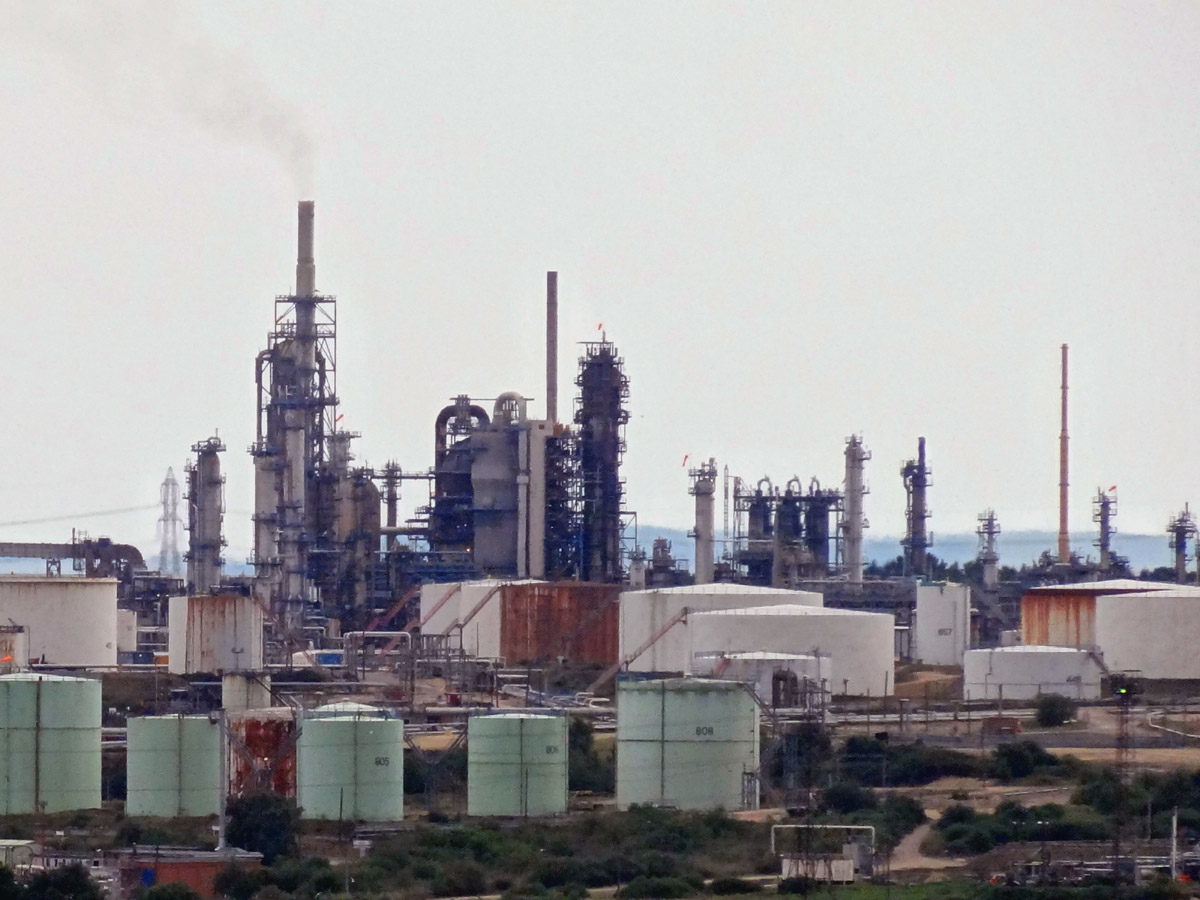 Oil prices have been rising in recent weeks. With Brent crude currently at around $85 per barrel, some commentators are predicting the price could reach $100. At the beginning of the year, the price was $67 per barrel; in June last year it was $44. In January 2016, it reached a low of $26. But what has caused the price to increase?
Oil prices have been rising in recent weeks. With Brent crude currently at around $85 per barrel, some commentators are predicting the price could reach $100. At the beginning of the year, the price was $67 per barrel; in June last year it was $44. In January 2016, it reached a low of $26. But what has caused the price to increase?
On the demand side, the world economy has been growing relatively strongly. Over the past three years, global growth has averaged 3.5%. This has helped to offset the effects of more energy efficient technologies and the gradual shift away from oil to alternative sources of energy.
On the supply side, there have been growing constraints.
The predicted resurgence of shale oil production, after falls in both output and investment when oil prices were low in 2016, has failed to materialise as much as expected. The reason is that pipeline capacity is limited and there is very little  scope for transporting more oil from the major US producing area – the Permian basin in West Texas and SE New Mexico. There are similar pipeline capacity constraints from Canadian shale fields. The problem is compounded by shortages of labour and various inputs.
scope for transporting more oil from the major US producing area – the Permian basin in West Texas and SE New Mexico. There are similar pipeline capacity constraints from Canadian shale fields. The problem is compounded by shortages of labour and various inputs.
But perhaps the most serious supply-side issue is the renewed sanctions on Iranian oil exports imposed by the Trump administration, due to come into force on 4 November. The USA is also putting pressure on other countries not to buy Iranian oil. Iran is the world’s third largest oil exporter.
Also, there has been continuing turmoil in the Venezuelan economy, where inflation is currently around 500 000 per cent and is expected to reach 1 million per cent by the end of the year. Consequently, the country’s oil output is down. Production has fallen by more than a third since 2016. Venezuela was the world’s third largest oil producer.
Winners and losers from high oil prices
The main gainers from high oil prices are the oil producing countries, such as Russia and Saudi Arabia. It will also encourage investment in oil exploration and new oil wells, and could help countries, such as Colombia, with potential that is considered underexploited. However, given that the main problem is a lack of supply, rather than a surge in demand, the gains will be more limited for those countries, such as the USA and Canada, suffering from supply constraints. Clearly there will be no gain for Iran.
 In terms of losers, higher oil prices are likely to dampen global growth. If the oil price reaches $100 per barrel, global growth could be around 0.2 percentage points lower than had previously been forecast. In its latest World Economic Outlook, published on 8 October, the IMF has already downgraded its forecast growth for 2018 and 2019 to 3.7% from the 3.9% it forecast six months ago – and this forecast is based on the assumption that oil prices will be $69.38 a barrel in 2018 and $68.76 a barrel in 2019.
In terms of losers, higher oil prices are likely to dampen global growth. If the oil price reaches $100 per barrel, global growth could be around 0.2 percentage points lower than had previously been forecast. In its latest World Economic Outlook, published on 8 October, the IMF has already downgraded its forecast growth for 2018 and 2019 to 3.7% from the 3.9% it forecast six months ago – and this forecast is based on the assumption that oil prices will be $69.38 a barrel in 2018 and $68.76 a barrel in 2019.
Clearly, the negative effect will be greater, the larger a country’s imports are as a percentage of its GDP. Countries that are particularly vulnerable to higher oil prices are the eurozone, Japan, China, India and most other Asian economies. Lower growth in these countries could have significant knock-on effects on other countries.
Consumers in advanced oil-importing countries would face higher fuel costs, accounting for an additional 0.3 per cent of household spending. Inflation could rise by as much as 1 percentage point.
The size of the effects depends on just how much oil prices rise and for how long. This depends on various demand- and supply-side factors, not least of which in the short term is speculation. Crucially, global political events, and especially US policies, will be the major driving factor in what happens.
Articles
Data
Questions
- Draw a supply and demand diagram to illustrate what has been happening to oil prices in the past few weeks and what is likely to happen in the coming weeks.
- What is the significance of the price elasticity of demand and supply in determining the size of oil price increase?
- What determines (a) the price elasticity of demand for oil; (b) the income elasticity of demand for oil; (c) the price elasticity of supply of oil?
- Why might oil prices overshoot the equilibrium price that reflects changed demand and supply conditions?
- Use demand and supply diagrams to illustrate (a) the destabilising effects that speculation could have on oil prices; (b) a stabilising effect.
- What industries might gain from higher oil prices and why?
- What would OPEC’s best policy be in the current circumstances? Explain.

If you want a ticket for an event, such as a match or a concert, but the tickets are sold out, what do you do? Many will go to an agency operating in the ‘secondary market’. A secondary market is where items originally purchased new, such as tickets, company shares, cars or antiques, are put up for sale at a price that the market will bear.
The equilibrium price in a secondary market is where supply equals demand and the actual price will approximate to this equilibrium. In the case of tickets, this equilibrium price can be much higher than the original price sold by the venue or its agents. The reason is that the original price is below the equilibrium.
This is illustrated in the figure (click here for a PowerPoint). Assume that the total supply of tickets is Qs. Assume also that the official box office price is Pbo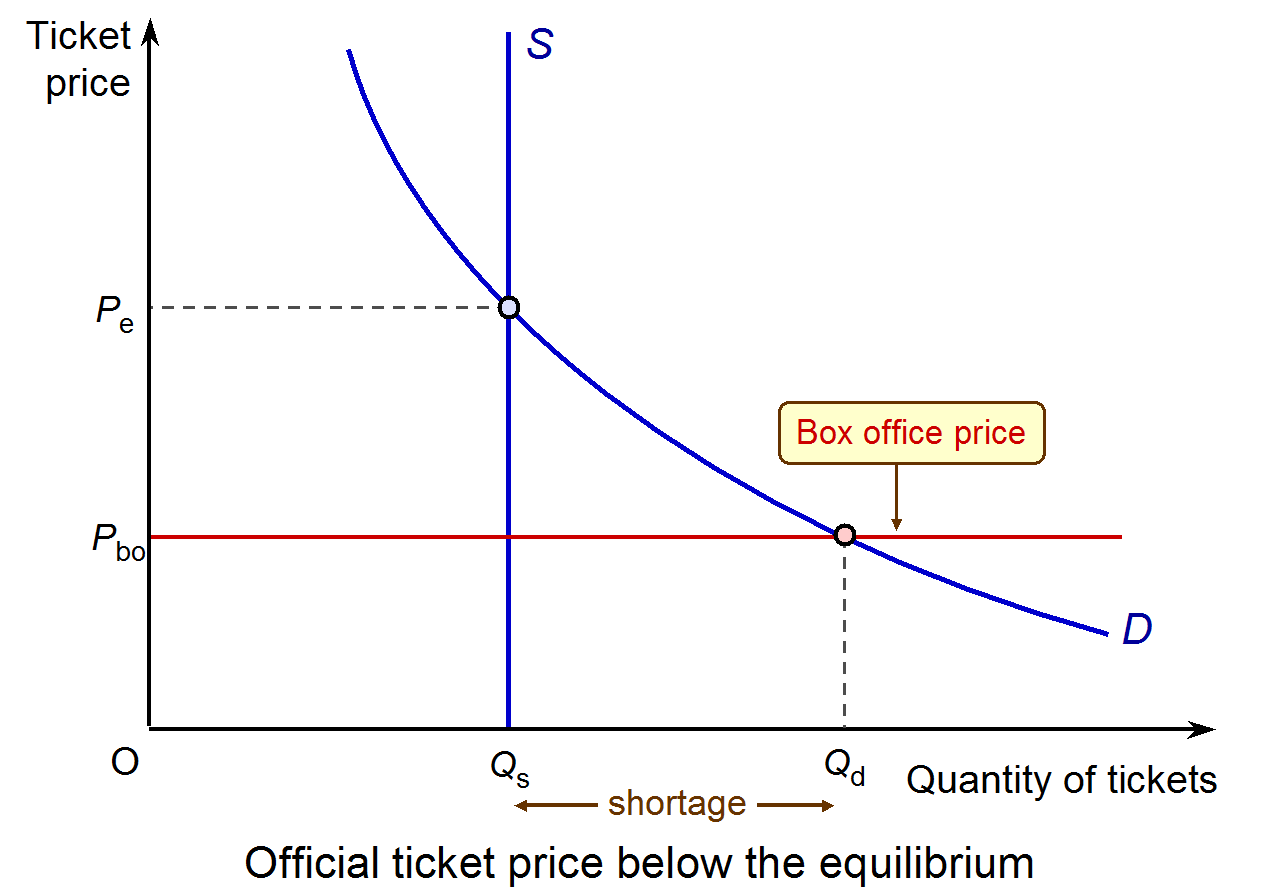 and that demand is given by the demand curve D. At the box office price demand exceeds supply by Qd – Qs. There is thus a shortage, with many fans unable to obtain a ticket at the official price. Many of you will be familiar with having to be as quick as possible to get hold of tickets where demand considerably outstrips supply. Events such as Glastonbury sell out within seconds of coming on sale.
and that demand is given by the demand curve D. At the box office price demand exceeds supply by Qd – Qs. There is thus a shortage, with many fans unable to obtain a ticket at the official price. Many of you will be familiar with having to be as quick as possible to get hold of tickets where demand considerably outstrips supply. Events such as Glastonbury sell out within seconds of coming on sale.
If you buy a ticket and then find out you cannot go to the event, you can sell the ticket on the secondary market through an online site or agency. Such agencies could be seen as providing a useful service as it means that otherwise empty seats will be filled. But if the equilibrium price is well above the original ticket price, there is the potential for huge gain by the agencies, who may pay the seller considerably less than the agency then sells the ticket to someone else.
What is more, the difference between the original price and the equilibrium price in the secondary market makes ticket touting, or ticket ‘scalping’, highly profitable. This is where people buy tickets with no intention of using them themselves but in order to sell them at much higher prices on the secondary market. Such ticket touting has been illegal for football matches since 1994 and was illegal for the 2012 London Olympics, but it is legal for plays, concerts, festivals and other events.
Ticket touts are often highly organised in obtaining tickets at official prices by buying early and using multiple credit cards and multiple identities to avoid systems that restrict the number of tickets issued to a card. They often use internet bots to mass purchase tickets the moment they go on sale.

Those in favour of ticket touting argue that the high price in the secondary market is just a reflection of demand and supply (see the IEA article below). Ticket touting allows tickets to be directed to people who value them most and will get the greatest benefit from it. What is more, banning ticket touting, so the argument goes, would simply drive it underground.
Those against argue on grounds of equity. Ticket prices set below the equilibrium are designed to give greater equality of access to fans. Rationing on a first-come first-served system, either on the internet or by a queue, is seen to be fairer than one by ability/willingness to pay. A poor person may be just as keen to go to an event as a rich person and gain just as much enjoyment from it, but cannot afford the high equilibrium price. What is more, non of the profit from the higher prices reaches the event organisers or the artists or players. Yet the mark-up and hence profit made by ticket touts can be massive, as the first Observer article below shows.
Various measures are being tried to prevent ticket touting. One is the use of paperless tickets, with the number of tickets limited per person and with people having to show their ticket on their phones along with ID at the door or gate. If a person cannot attend, then the solution is a system where they can give the ticket back to the box office (perhaps electronically) which will re-sell it for them at the official price.
A government-backed investigation, the Waterson review reported in May 2016 and recommended that touts should be licensed and that there should be harsher penalties for firms that flout consumer rights law as applying to ticket sales. Whether this would be sufficient to bring secondary market prices down significantly, remains to be seen. In the meantime, organisers do seem to be trying to find ways of beating the touts through smarter means of selling.
Articles
MP Nigel Adams calls for secondary ticket marketing to be reformed Music Week, James Hanley (14/9/16)
Iron Maiden go to war with ticket touts BBC News, Mark Savage (22/9/16)
 The new age of the ticket tout BBC World Tonight, Andrew Hosken (25/5/16)
The new age of the ticket tout BBC World Tonight, Andrew Hosken (25/5/16)
Government urged to help music industry tackle ticket touts The Guardian, Rob Davies (13/9/16)
Ticket touts face licensing threat The Guardian, Rupert Jones (26/5/16)
How the ticket touts get away with bleeding fans dry The Observer, Rob Davies and Rupert Jones (15/5/16)
What sorcery is this? A £140 ticket for new Harry Potter play now costs £8,327 The Observer, Rob Davies and Laurie Chen (14/8/16)
Ticket touts made $3m from the last Mumford & Sons tour. $0 went back to the music industry. Music Business Woldwide, Adam Tudhope (6/9/16)
This is tout of order – join the Daily Mirror campaign to beat rip-off ticket resales Daily Mirror, Nada Farhoud (19/9/16)
Ticket touts: A muggle’s game The Economist (20/8/16)
Can We Fight Back Against The Robot Touts Ruining Live Music? Huffington Post, Andy Webb (6/9/16)
In defence of ticket touts Institute of Economic Affairs, Steve Davies (25/2/15)
Report
Consumer protection measures applying to ticket resale: Waterson review Department for Business, Innovation & Skills and Department for Culture, Media & Sport 26/5/16)
Guide
#Toutsout MMF & FanFair Alliance September 2016
Questions
- Why can ticket touts sell tickets above the equilibrium price shown in the diagram?
- In what ways could ticket touts be said to be distorting the market?
- How do ticket touts reduce consumer surplus? Could they reduce it to zero?
- Why may allowing ticket touting to take place result in empty seats at concerts or other events?
- Would it be a good idea for event organisers to charge higher prices for popular events than they do at present, but still below the equilibrium
- How does the price elasticity of demand influence the mark-up that ticket touts can make? Illustrate this on a diagram similar to the one above.
- Is it in ticket touts’ interests to adjust prices as an event draws closer, just as budget airlines adjust seat prices as the plane fills up? Could organisers sell tickets in the primary market in this way with prices rising as the event fills up?
- Discuss the various ways in which the secondary ticket market could be reformed? To what extent do these involve reforms in the primary ticket market?
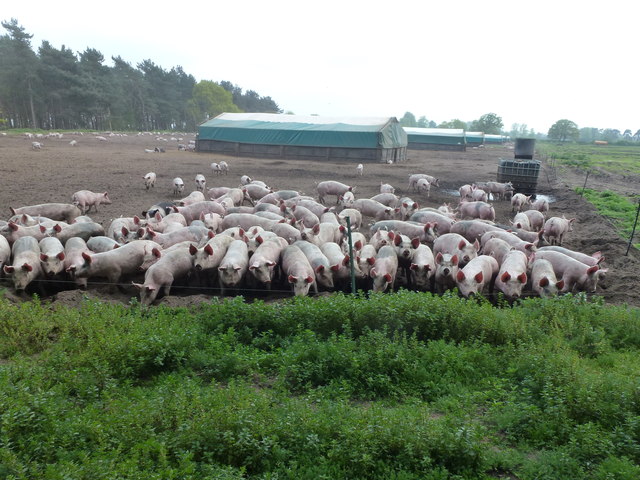 Pork – a favourite food of many Brits, whether it’s as a key ingredient of a roast dinner or a full English Breakfast! But, British pig farmers may be in for a tricky ride and we might be seeing foreign pork on our plates in the months to come. This is because of the falling price of pork, which may be driving local farmers out of the market.
Pork – a favourite food of many Brits, whether it’s as a key ingredient of a roast dinner or a full English Breakfast! But, British pig farmers may be in for a tricky ride and we might be seeing foreign pork on our plates in the months to come. This is because of the falling price of pork, which may be driving local farmers out of the market.
As we know, market prices are determined by the interaction of demand and supply and as market conditions change, this will affect the price at which pork sells at. This in turn will have an impact on the incomes of farmers and hence on farmers’ ability to survive in the market. According to forecasts from Defra, specialist pig farms are expected to see a fall in income by 46%, from £49,400 to £26,500 in 2016. A key driver of this, is the decline in the price of pork, which have fallen by an average of £10 per pig. This loss in income has led to pig farmers facing the largest declines of any type of farm, even beating the declines of dairy farmers, which have been well-documented.
If we think about the forces of demand and supply and how these have led to such declines in prices, we can turn to a few key things. Following the troubles in Russia and the Ukraine and Western sanctions being imposed on Russia, a retaliation of sorts was Russia banning European food imports. This therefore reduced demand for British pork. Adding to this decline in demand, there were further factors pushing down demand, following suggestions about the adverse impact that bacon and ham have on health. If pig farmers in the UK continue with the number of pigs they have and bearing in mind they would have invested in their pig farms before such bans and warnings were issued, then we see supply being maintained, demand falling and prices being pushed downwards.
Zoe Davies, Chief Executive of the National Pig Association said:
“This year is going to be horrendous for the British pig industry … Trading has been tough for at least 18 months now and we are starting to see people leave. We’re already seeing people calling in saying they’ve decided to give up. All we can hope is that more people leave European pig farms before ours do.”
We can also look to other factors that have been driving pig farmers out of business, including a strong pound, the glut of supply in Europe and productivity in the UK. Lily Hiscock, a commentator in this market said:
“It is estimated that the average pig producer is now in a loss-making position after 18 months of positive margins … The key factors behind the fall in markets are the exchange rate, UK productivity and retail demand … Indeed, pigmeat seems to be losing out to cheaper poultry meat in consumers’ shopping baskets … The recent fall in prices may stimulate additional demand, and a strengthening economy could help, but at present these are hopes rather than expectations.”
The future of British pig farms is hanging in the balance. If the economy grows, then demand may rise, offsetting the fall in demand being driven by other factors. We will also see how the exit of pig farmers affects prices, as each pig farmer drops out of the market, supply is being cut and prices rise. Though this is not good news for the farmers who go out of business, it may be an example of survival of the fittest. The following articles consider the market for pork.
Podcast
 UK pork market, Poppers, Scrap Metal BBC Radio 4, You and Yours (28/01/16)
UK pork market, Poppers, Scrap Metal BBC Radio 4, You and Yours (28/01/16)
Articles
Drop in global pork prices to bottom out – at 10-year lows agrimoney.com (29/01/16)
UK pork crisis looms as pig farmers expect income to half in 2016 Independent, Zlata Rodionova (5/02/16)
British pig farmers et for horrendous year as pork prices fall Western Morning News (17/01/16)
Questions
- What are they demand-side and supply-side factors which have pushed down the price of pork?
- Illustrate these effects using a demand and supply diagram.
- Into which market structure, would you place the pork industry?
- Using a diagram showing costs and revenues, explain why pig farmers in the UK are being forced out of the market.
- How has the strength of the pound affected pork prices in the UK?
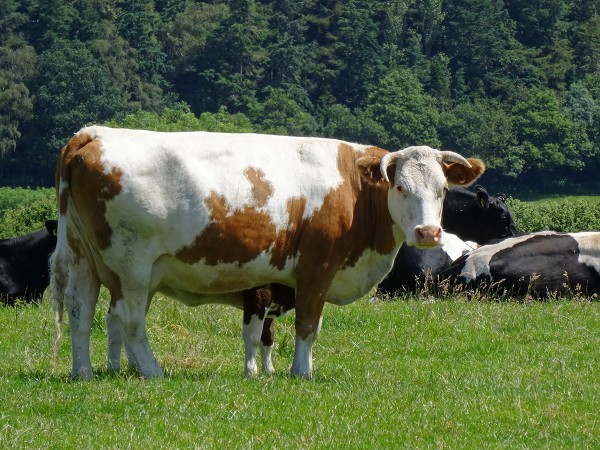 Most of us will have milk in our fridges – it’s a basic product consumed by the majority of people on a daily basis and hence a common feature of most shopping trolleys. As we saw in the post Got milk?, the low price of milk has been causing problems for farmers. This has caused one Morrisons store to take a different approach.
Most of us will have milk in our fridges – it’s a basic product consumed by the majority of people on a daily basis and hence a common feature of most shopping trolleys. As we saw in the post Got milk?, the low price of milk has been causing problems for farmers. This has caused one Morrisons store to take a different approach.
In the increasingly globalised world, British dairy farmers are no longer competing against each other. The global market place means that they are now facing growing competition from abroad and in this global world, supply exceeds demand. Even in the EU, the member states in 2015 are exceeding the milk production levels from 2014. In many markets, we wouldn’t be so concerned about production (or supply) rising, as demand can keep pace. However, in the market for milk, it’s not a product that you consume (that much) more of as your income rises. So, as the world gets richer, demand for milk is not increasing at the same pace as supply – demand in China has collapsed. This means that prices are being forced down. Adding to this global market place, we saw the European Union remove its quotas on milk production, thus boosting supply and Russian bans on imports.
The farmers themselves are in a tricky situation. They are often the small players in the supply chain, with prices being forced down by customers, supermarkets and milk processors. AHDB Dairy, the trade body, says that the average price of milk has decreased to just 23.66p per litre. According to leading industry experts this is well below the costs of production, suggested to be closer to 30p per litre. If these figures are even close to being accurate, then clearly dairy farmers’ costs of production per litre are no longer covered by the price they receive. Every litre of milk produced represents a loss.
The price that supermarkets pay to farmers for milk does vary, with some such as Marks and Spencer and Tesco ensuring that they pay farmers a price above cost. However, Morrisons in Bradford has adopted a new strategy and brand. 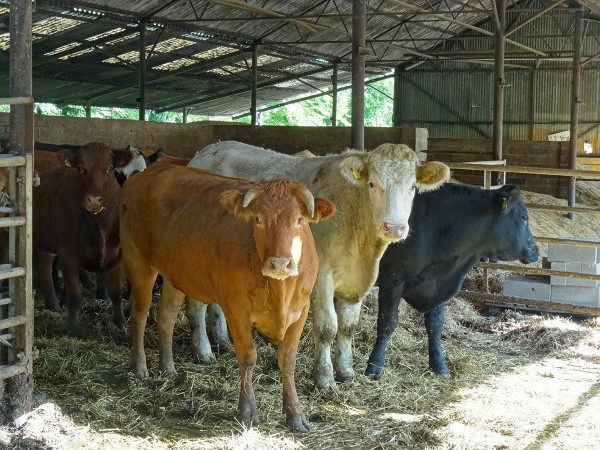 Their new milk brand ‘Morrisons Milk for Farmers’ has been launched at a 23p price rise for every four pint bottle. The catch: they will become the first UK retailer where the 23p price hike goes directly to farmers. This represents 10 pence per litre of milk going directly back to the farmers that produce it. This is a bold strategy, but data and surveys do suggest a willingness to pay more from customers, if it means that dairy farmers get a fairer deal. The protests we have seen across the country have certainly helped to generate interest and created awareness of the difficulties that many farmers are facing. Rob Harrison from the NFU said:
Their new milk brand ‘Morrisons Milk for Farmers’ has been launched at a 23p price rise for every four pint bottle. The catch: they will become the first UK retailer where the 23p price hike goes directly to farmers. This represents 10 pence per litre of milk going directly back to the farmers that produce it. This is a bold strategy, but data and surveys do suggest a willingness to pay more from customers, if it means that dairy farmers get a fairer deal. The protests we have seen across the country have certainly helped to generate interest and created awareness of the difficulties that many farmers are facing. Rob Harrison from the NFU said:
“We are pleased that Morrisons has acknowledged the desperate situation that many dairy farmers still find themselves in and recognise that retailers have a big role to play in, helping customers to support the UK dairy sector…
…Research from Mintel revealed over half of people who drink cows milk, would be prepared to pay more than £1 for a four-pint bottle of milk, as long as it is dairy farmers that benefit. This new initiative will enable them to do just that. The 10p a litre extra will go directly back into the dairy sector will make a difference on farm.”
The interesting thing will be to observe the impact on sales following this 23p price rise. We would normally expect customers to look for the cheaper substitutes, but evidence does suggest that British consumers are willing to pay the price premium if it means helping British farmers. A similar strategy adopted for British Cheddar Cheese proved fruitful and over the coming weeks, we will see if the average consumer is willing to pay directly the dairy farmers. The following articles consider this topic.
Morrisons milk for farmers brand goes nationwide at £1.12 for four pints The Grocer, Carina Perkins (12/10/15)
Morrisons to create new milk brand for farmers BBC News (11/10/15)
Milk price row: farming union leaders meet Morrisons bosses The Guardian, Graham Ruddick (11/10/15)
Morrisons to sell new ‘Milk for farmers’ brand to support British dairy producers Independent, Loulla-Mae Eleftheriou-Smith (11/8/15)
Government to give one-off milk payment for dairy farmers as Morrisons launches premium milk brand City A.M., Catherine Neilan (12/10/15)
New Morrisons milk brand pays farmers more The Yorkshire Post (12/10/15)
Questions
- Using demand and supply analysis, explain which factors have caused the price of milk to fall.
- When incomes rise, the demand for milk does not really change. What does this suggest about the income elasticity of demand for milk and the type of product that it is?
- If prices rise and sales also rise, does this suggest that British milk has an upward sloping demand curve?
- If we do see little effect on the demand for milk following Morrisons 23p price rise, what conclusion can we come to about the price elasticity of demand?
- Why do supermarkets and milk processors have the power to force down prices paid to dairy farmers?
- What type of market structure do you think dairy farmers compete in?
- If dairy farmers are unable to sell a litre of milk for a higher price than it costs to produce, is it a sensible strategy for them to remain in the market?
 You’ll be familiar with these types of posts from me, which typically start with a comment like: ‘On my commute to work on …’. That’s one of the good things about a long drive – the interesting and informative discussions that you hear on the radio. This one is another interesting piece from BBC Radio 4, looking at a very topical issue, especially to those living in the South West and other rural areas in the UK.
You’ll be familiar with these types of posts from me, which typically start with a comment like: ‘On my commute to work on …’. That’s one of the good things about a long drive – the interesting and informative discussions that you hear on the radio. This one is another interesting piece from BBC Radio 4, looking at a very topical issue, especially to those living in the South West and other rural areas in the UK.
We have recently seen pictures of farmers protesting about the price of milk and in places like Somerset, the protest took a rather odd method, where farmers from across the region entered supermarkets and simply bought all of the milk, before giving it away. The issue is that dairy farming is no longer profitable, as the price that dairy farmers receive for each pint of milk is now lower than the cost of providing it. Thus, for each pint they make a loss.
There are many reasons that have contributed to this situation, including pressures imposed by customers demanding cheaper prices; pressures from supermarkets using their monopsony power to  force down the prices paid to farmers; and pressures from abroad. In the case of milk, we have a surplus and with a perishable product, i.e. one that cannot be stored, unlike wheat, this has contributed to falling prices. Data suggest that we are seeing approximately one farmer per day being forced to leave the indsutry.
force down the prices paid to farmers; and pressures from abroad. In the case of milk, we have a surplus and with a perishable product, i.e. one that cannot be stored, unlike wheat, this has contributed to falling prices. Data suggest that we are seeing approximately one farmer per day being forced to leave the indsutry.
This programme explores the current dairy farming crisis and draws some similarities with the wheat crisis that the UK experienced in the 1930s. The programme below is 30 minutes and provides some interesting insights on two important commodities and the economics behind the markets.
 Today’s crisis in dairy farming and the wheat crisis of the 1930s BBC Radio 4; The Long View, Jonathan Freedland (29/9/15)
Today’s crisis in dairy farming and the wheat crisis of the 1930s BBC Radio 4; The Long View, Jonathan Freedland (29/9/15)
Questions
- Using demand and supply analysis, explain the situation in the milk market.
- Now consider the wheat industry and provide a similar analysis of how prices are set and what caused the problems seen in the 1930s.
- Although these two commodities have similarities they are also very different. Why can two different commodities experience such similar problems at such different times?
- What are the key demand and supply-side factors affecting the current low price of milk?
- Consider the market for (a) milk and (b) wheat. What are (if any) the market failures within each area?
- Agriculture is an area where we do see significant government intervention. Should the UK government be doing more to help the UK’s dairy farmers? If so, what should they do and would this intervention create further problems, e.g. unintended consequences?
 Oil prices have been rising in recent weeks. With Brent crude currently at around $85 per barrel, some commentators are predicting the price could reach $100. At the beginning of the year, the price was $67 per barrel; in June last year it was $44. In January 2016, it reached a low of $26. But what has caused the price to increase?
Oil prices have been rising in recent weeks. With Brent crude currently at around $85 per barrel, some commentators are predicting the price could reach $100. At the beginning of the year, the price was $67 per barrel; in June last year it was $44. In January 2016, it reached a low of $26. But what has caused the price to increase? scope for transporting more oil from the major US producing area – the Permian basin in West Texas and SE New Mexico. There are similar pipeline capacity constraints from Canadian shale fields. The problem is compounded by shortages of labour and various inputs.
scope for transporting more oil from the major US producing area – the Permian basin in West Texas and SE New Mexico. There are similar pipeline capacity constraints from Canadian shale fields. The problem is compounded by shortages of labour and various inputs. In terms of losers, higher oil prices are likely to dampen global growth. If the oil price reaches $100 per barrel, global growth could be around 0.2 percentage points lower than had previously been forecast. In its latest World Economic Outlook, published on 8 October, the IMF has already downgraded its forecast growth for 2018 and 2019 to 3.7% from the 3.9% it forecast six months ago – and this forecast is based on the assumption that oil prices will be $69.38 a barrel in 2018 and $68.76 a barrel in 2019.
In terms of losers, higher oil prices are likely to dampen global growth. If the oil price reaches $100 per barrel, global growth could be around 0.2 percentage points lower than had previously been forecast. In its latest World Economic Outlook, published on 8 October, the IMF has already downgraded its forecast growth for 2018 and 2019 to 3.7% from the 3.9% it forecast six months ago – and this forecast is based on the assumption that oil prices will be $69.38 a barrel in 2018 and $68.76 a barrel in 2019.





